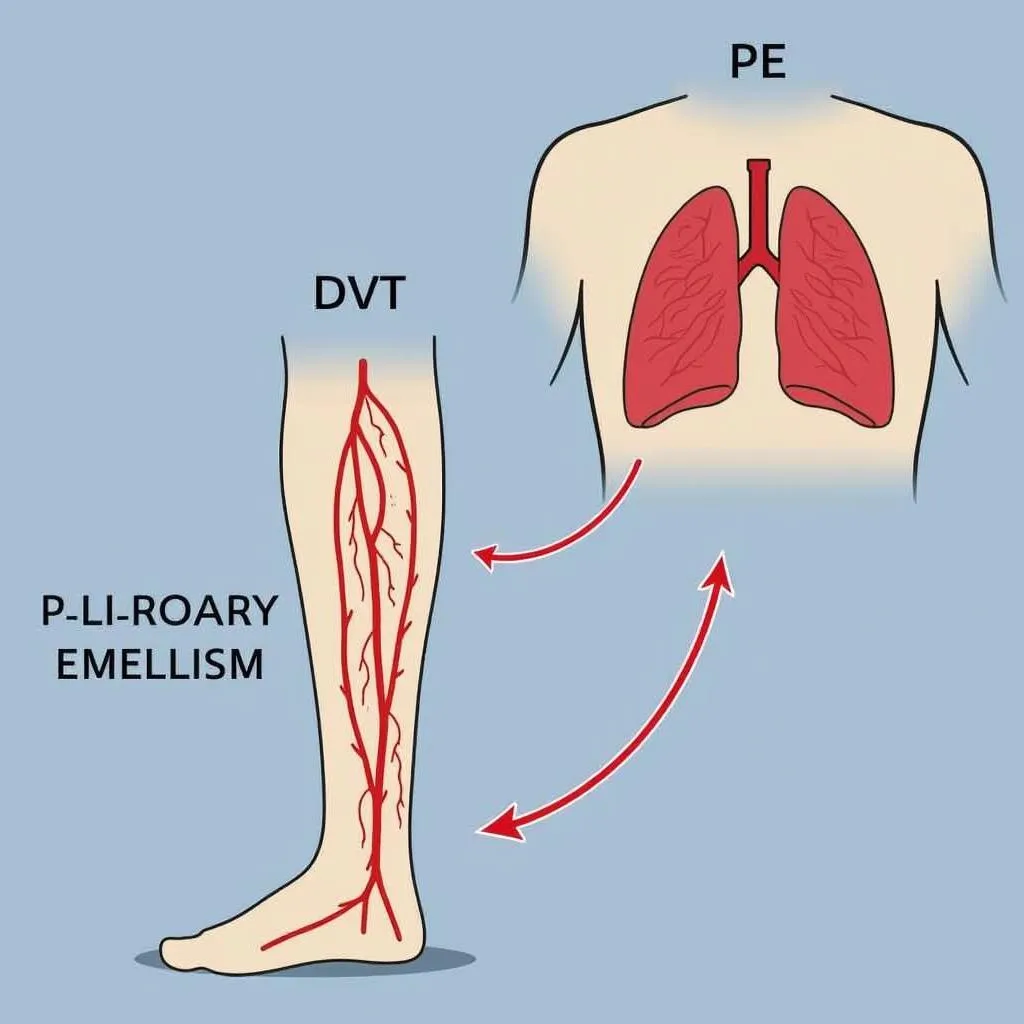Understanding Blood Clots and Travel
Have you ever been on a long flight, looked down at your legs, and thought, “What if I get a blood clot?” It’s a common travel worry, and for a good reason! Understanding blood clots and how they travel is important for anyone, especially those planning a long journey.
While a scenic drive down California’s Pacific Coast Highway might seem worlds away from the medical world of blood clots, the reality is that extended travel can increase your risk. So, let’s unpack this:
What are Blood Clots?
Blood clots are gel-like clumps of blood that help stop bleeding when you get injured. Think of them as your body’s natural band-aid. However, problems arise when clots form inside blood vessels without a need for healing.
Can Blood Clots Really Travel?
Yes! When a blood clot forms in a deep vein, usually in the legs, it’s called Deep Vein Thrombosis (DVT). If part of this clot breaks off, it can travel through the bloodstream to the lungs, causing a Pulmonary Embolism (PE), a serious and potentially life-threatening condition.
 Blood Clot Traveling Through Bloodstream
Blood Clot Traveling Through Bloodstream
Factors that Increase the Risk of Blood Clots While Traveling
Ever noticed those signs in airports encouraging you to walk around during long layovers? They’re onto something! Prolonged immobility, like sitting on a long flight or road trip, is a major risk factor for blood clots. Here are others:
- Dehydration: Remember that time you forgot your reusable water bottle before boarding that flight to see the Northern Lights in Iceland? Staying hydrated is important, especially when traveling.
- Pre-existing Conditions: Certain medical conditions, like inherited clotting disorders, pregnancy, and some cancers, can increase your risk.
- Medications: Some medications, like hormonal birth control and hormone therapy, can also increase your risk.
Minimizing Your Risk: Tips for Healthy Travel
Don’t let the fear of blood clots keep you from exploring the ancient ruins of Machu Picchu! Here’s how to minimize your risk:
- Stay Active: Take breaks to walk around, stretch your legs, and move your feet in circles every hour or so, especially during long journeys.
- Hydrate Wisely: Drink plenty of water and avoid excessive alcohol or caffeine.
- Talk to Your Doctor: If you have any pre-existing conditions or concerns, consult your doctor before your trip.
FAQs About Blood Clots and Travel
Can I travel if I’ve had a blood clot before?
It depends on your individual situation. Talk to your doctor about your travel plans and any precautions you should take.
What are the symptoms of a blood clot?
Symptoms can include swelling, pain, tenderness, and warmth in the affected leg. If you experience sudden shortness of breath, chest pain, or coughing up blood, seek immediate medical attention.
Are compression socks helpful?
Yes, compression socks can improve blood flow in your legs and help prevent blood clots.
Planning Your Next Adventure?
Don’t let health concerns hold you back! By understanding the risks and taking preventative measures, you can explore the world with peace of mind.
For more travel health tips, visit travelcar.edu.vn. Safe travels!
